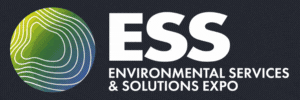It is estimated that 119,000 tonnes of HDPE plastic milk bottles were consumed in the UK in 2009.
Of this total, 86,790 tonnes were collected for recycling – reflecting the growth in kerbside collections which, it is estimated, now accounts for four out of five of every bottle collected for recycling.
Nampak was the first company to use recycled HDPE flakes to produce milk bottles for the UK (see letsrecycle.com story) and the company has supply agreements with Newcastle-based AWS Ecoplastics, Closed Loop Recycling and Greenstar.
James Crick, business development director at Nampak, said: “This is great news for Nampak and the Dairy Industry as the HDPE collected can be recycled back into rHDPE (recycled-content) plastic milk bottles.
“All the milk bottles we manufacture in the UK now contain up to 10% rHDPE, and we are currently planning with our customers to move to 15% in October 2010. In the longer term, we have targets to increase the recycled content up to 50% by 2020 or before. The increase in availability of recycled material will support our supply of high-quality recycled content HDPE bottles to our customers.”
Recoup
The growth in HDPE milk bottle recycling indicated in the research was welcomed by Stuart Foster, director of Recoup, who said that, while 72% seemed high, he had confidence in the figures.
He said: “Our research is based on significant samples of material and supports other research and observations in the past which suggests that some bottles in the waste stream are more inherently recycled than others.”
Mr Foster said the results showed that householders equated milk bottles with recycling, which he noted was encouraging and could be down to successful local authority communications. But, he added that more should be done to improve capture rates for other types of bottles.
He said: “Given the demand for food-grade plastics this is good but it could also be a call for action for other bottle suppliers to reach 72% for all types of bottle.”
Looking forward, Nampak said it was “essential” that all of those concerned continued the drive towards increased recycling levels well above this new level of 72%.
Mr Crick said: “The dairy industry is committed to the principles of recycling, but for it to reach its packaging targets it is of fundamental importance that local authorities and consumers remain committed to recycling too.”
The full results of Recoup's Household Plastics Packaging Collection Survey 2010, previewed last month (see letsrecycle.com story) are set to be published at the end of October.









Subscribe for free